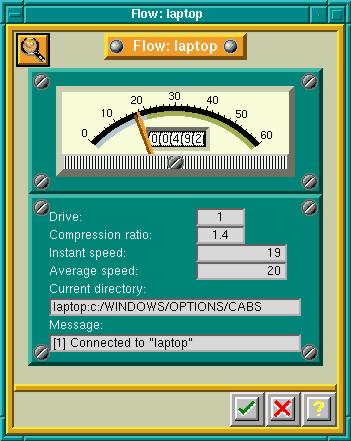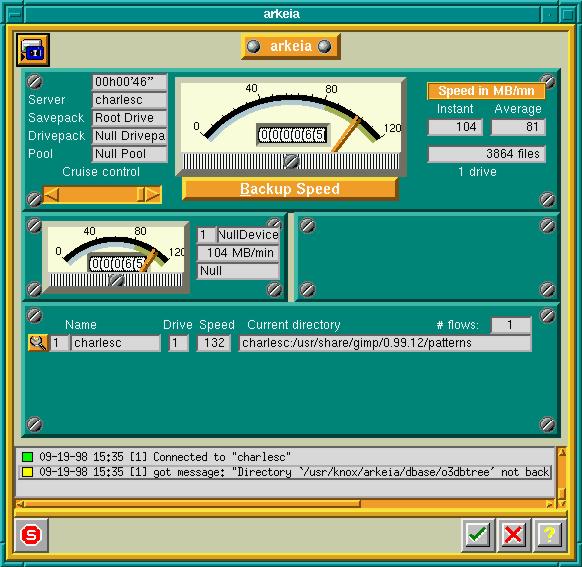

 |
 |

The server software can run on Linux, Solaris, SGI, AIX, HP-UX or SCO. Give it a fast connection to your network and one or more fast tape drives, and you are ready. Clients, in addition to the servers just listed, include Windows NT, Windows 95 and 98, Novell, VMS, ICL and others. The servers and clients communicate over TCP/IP, so the physical layer of your network doesn't matter. You don't need Windows sharing or NFS to do your backups.
To review the software, I downloaded the shareware version. I set up the server on my 333 MHz Pentium II Red Hat 5.0 Linux box and put the Windows 95 client on my 166 MHz Pentium laptop. They are connected over a TCP/IP network on Ethernet. The installation and operation manuals are in Adobe PDF format.
The software for Linux comes in gzipped tar files and contains its own installation software. The installation software inserts the NLSERVD daemon into the boot sequence and starts it running, so as soon as you finish the installation you are ready to use the product. Knox does not offer an RPM version. The software goes into its own /usr subdirectory and uses one file of its own under /etc, so there is no conflict with an RPM system.
The Windows 95 client software is delivered in a professionally done InstallShield package. The average Windows user who can install his own software will be able to install it with no problem. It correctly saves and restores Windows 95 attributes--something backups over SAMBA to a non-Windows tape server won't necessarily do. The Windows 95 client will not back up a file while Word 6 has it open, but will get the automatic backup file if there is one. This is a failing of Windows 95, not Arkeia; the only workaround is for users to shut down programs when they leave for the day.
The interface for the software is a GUI using X on Linux. It was a bit disconcerting when I first saw it but is internally consistent, and I quickly learned to use it. Tool tips make the software much easier to use.


Because the software is clearly designed to support large shops, Arkeia is conceptually more complicated than typical backup software such as BRU. Before you can even do a test backup, you must define a number of objects.
One thing I like in a backup package, but is missing, is a manual retension command. Of course, I can use mt retension on most any UNIX or Linux box. Arkeia also has a provision for a user-defined command-line operation before and after each backup. If you like retensions before each use of a tape, add it here. This is customization I have not seen with other tape backup programs.
Scheduled backups are essential in any production shop. Defining them is simple and flexible. You can run daily, weekly, monthly and yearly backups. Periodic backups are defined in terms of savepacks and tape pools. For unattended backup, you can require a new tape with each backup.
Pricing is reasonable compared to an NT server network backup package. The shareware version has no set price, but a quarter of contributions over $20 will be contributed to Software in the Public Interest, the organization which supports the Debian Linux distribution. Details are readily available on the Knox web site.
Using Arkeia on Linux means no expensive NT server licenses. It also means you can find a use for that old 486 box the IT department has been using for a doorstop because NT on anything short of a Pentium 200 is too slow to use.
Network backup is probably the mission-critical application in any organization. I have no qualms about recommending Arkeia on Linux for that application. If you want to investigate this package further, get the manual from Knox's web site and read it. Better yet, get the manual and the software and use them, as I did.
Charles Curley (http://w3.trib.com/~ccurley/) lives in Wyoming, where he rides horses and herds cattle, cats and electrons. Only the last of those pays well, so he also writes documentation for a small software company headquartered in Redmond, WA. He can be reached via e-mail at ccurley@trib.com.